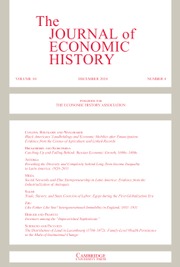As the title suggests, this book is more about the evolution of economic theory than an inquiry into the Roman economy. Elliott chose his examples from ancient Rome, but he did not present a narrative about Roman practices or development. The book is well written and engaging, but it is unclear who the audience is. Let me discuss a few examples to give a sense of the book.
The first example is from the crisis of 33. Tiberius loaned money to landowners in a recession. Elliott concluded, “In no way does the historical context allow historians to suggest that Tiberius acted or intended to act as an ‘economically rational’ central banker. The monetary injection was aimed at and indeed could only accomplish a strictly limited purpose: to make the land portfolios of elites align to the law. Tiberius used scarce means to achieve ends: he acted purposefully. The emperor loaned out money to elites during a cash shortage so the they could avoid the shame of defaulting on their loans and also maintain the minimum landholdings required to retain their senatorial status” (pp. 93-94).
This appears to be a description of the Federal Reserve actions in the 2008 financial crisis. The Fed loaned money for the same reasons Elliott inferred for Tiberius, and it benefitted modern elites rather than lesser individuals like farmers and house owners. To most readers, Elliott’s statement has two implications. First, it is remarkable that Tiberius understood enough about the Roman economy to do what modern central bankers do in financial crises. Second, the focus on elites also is typical of the modern action, and the recovery from the 2008 crisis was partial and slow as a result. In other words, Tiberius acted like a Republican official today.
This is not complex macroeconomics, and the preceding discussion of the evolution of economic thought does not help our understanding of Tiberius. Elliott may have assumed that Tiberius was not totally rational as he did this, but Elliott failed to discuss the best modern book on rationality, namely Kahneman, Thinking Fast and Slow (New York: Farrar, Straus and Giroux, 2011). Kahneman was arguing the reverse of Elliott, namely that even today people initially have non-rational reactions and only slowly come to act like Tiberius.
The second example is from Elliott’s conclusion: “I did not, however, write this book to glorify the methodologies of the past, but to propose some forward-looking possibilities. Progression, however, requires that ancient historians back out of the ditch that has been dug by almost a century of reactionary back-and-forth movement between narrow and overly broad dichotomies. There are probably many productive ways ancient historians might escape the rut: my own suggestion is to embrace a dualistic approach to economic theory which studies the ‘internal’ motivations and value-judgments of actors and the ‘external’ events of the actors’ world differently” (p. 174).
This quote is hard to understand. It comes from the beginning of a paragraph, and the end of the paragraph tries to clarify Elliott’s point: “Purposeful action is apodictic, but the meanings of action and the larger social, cultural and institutional environment in which purposeful action occurred in the historical Roman world, cannot be and in fact must not be mapped or dictated by any model—economic or otherwise” (p. 174).
Returning to Tiberius, all economist historians recognize that his simple monetary expansion is best understood by using a simple Keynesian model. If the economic historian must not use models, he or she cannot make sense of Elliott’s argument or Roman economic history. It appears that Elliott does not understand that economic theory is made up of economic models.


